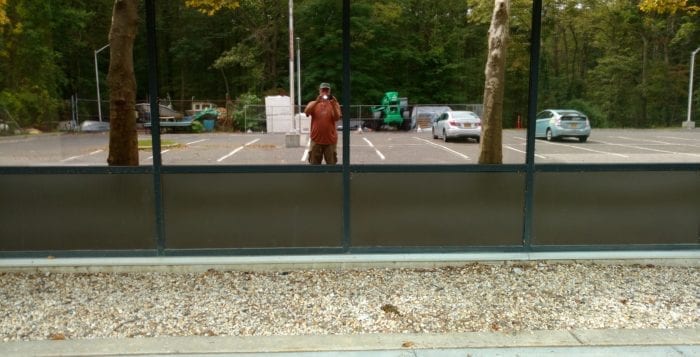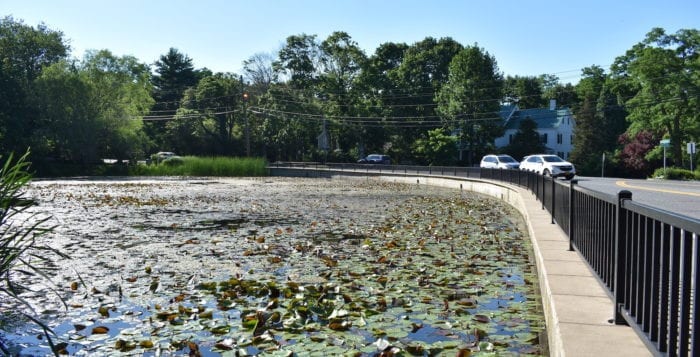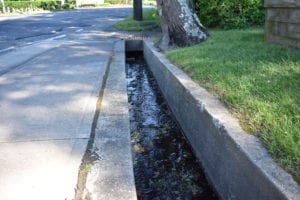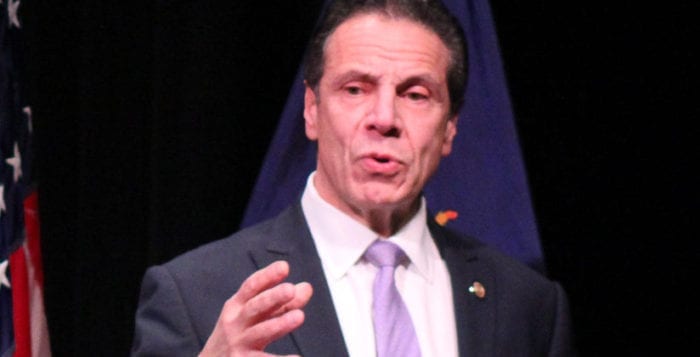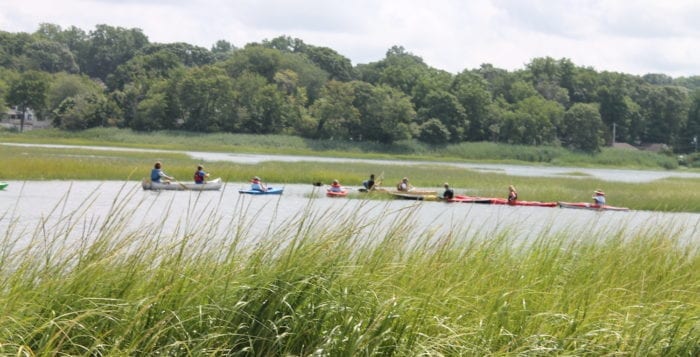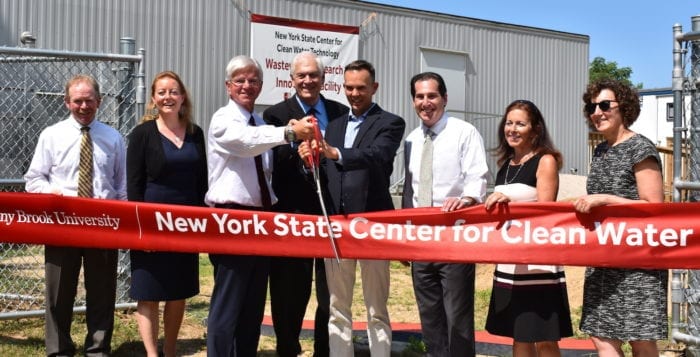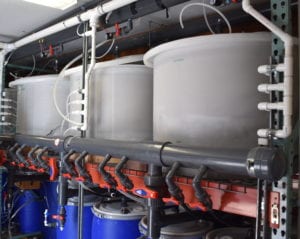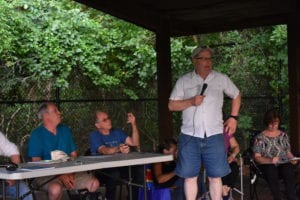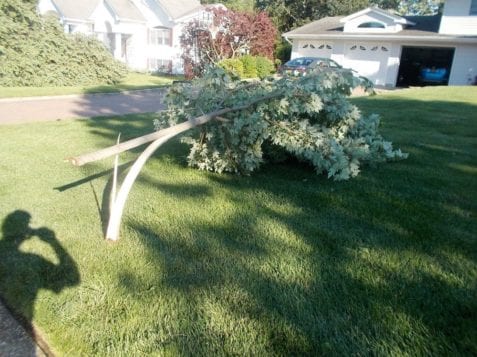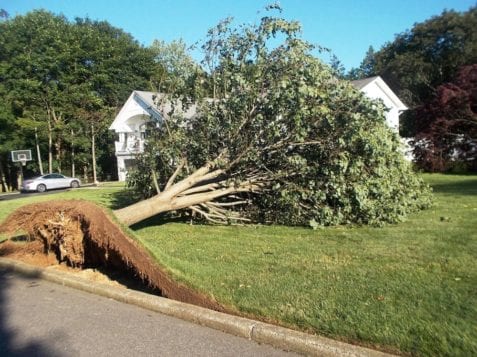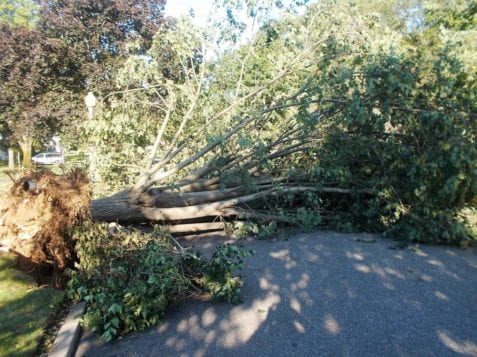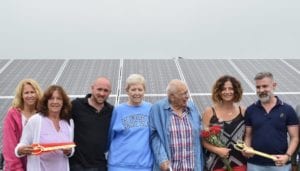By John L. Turner
With the use of a helpful anchoring spoon, I swirled a large bundle of delicious linguine strands around the tines of my fork. As I brought the forkful of food forward, to meet its just fate as the first bite of a delicious pasta dinner, I looked up from the dining table to the view outside the large picture window in the adjacent living room.
At that precise moment a blue jay (after all a birder is always birding!) launched from a low branch of an oak tree on the other side of the road, swooped across it and headed straight for the aforementioned window. Certainly it will veer to a side as it comes closer, or turn abruptly to perch on the roof, I thought to myself, but no such luck — it flew, beak first, directly into the window. It bounced off and down into the bushes in front.
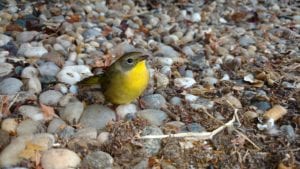
After shouting an expletive, I jumped from the dining room table and out the front door to see if the blue jay was alright. I anxiously scanned around and through the waist-high ornamental shrubs looking for what I expected to be a lifeless body that moments before had been so alive. I didn’t see it. I went behind the bushes, figuring perhaps it had fallen straight down. No bird. I looked through the web of branches. No bird. I looked under the shrubs, in the dirt in front of the shrubs and on the lawn. Still no bird.
A solid 10-minute search while my pasta dinner grew cold produced nothing. I had to conclude the bird had survived the glancing blow to the window and after being momentarily stunned flew off. Standing near the sidewalk in the front yard I had the view the bird had experienced moments before — the window looked like an opening in the forest that reflected a dogwood tree on the right and taller oak trees in the distance.
Most window strike victims are not as lucky as this blue jay was and as I soon learned what I had experienced is not uncommon — in fact it happens with frightening regularity, with estimates ranging from 1 to 3 million North American birds dying this way each and every day. This means an estimated 365 million to 1 billion birds dying from window strikes every year in the United States.
The victims range from tiny to large, from dull to colorful. Hummingbirds are common victims and birds of prey, although less common, also collide with windows. The large group of birds referred to as songbirds — thrushes, vireos, warblers, sparrows and the like — form the largest bulk of collision victims.
Migrant birds die more often than resident birds such as blue jays, the apparent reason being that resident birds better “know” their territory while migrant birds, transients in migratory habitats, don’t.
Why do birds fly into windows and die in such large, almost unimaginable numbers? For the same reason people walk into glass doors, windows and dividers (often enough to produce a series of four-minute-long videos you can watch on YouTube!) — they don’t see the glass given its transparent qualities.
For birds, though, a window’s transparency isn’t its only deadly feature. Its reflectivity can be worse. The reflected images in the window of trees, shrubs, sky and clouds fool birds into thinking they are the real thing. The result is a bird moving through space, at normal flying speeds, toward trees reflected in the distance until it abruptly meets the glass pane — most of the time with fatal results.
This has occurred with increasing frequency as architects have moved toward using more and more highly reflective glass in building design, to produce dramatic views of the surrounding landscape. And the tall skyscrapers don’t pose the biggest problem — more than 90 percent of birds that perish from collisions do so by flying into the windows of homes and one- to four-story office buildings. It’s the lower stories of the building that reflect the features of the ambient environment creating the “fatal attraction” to birds.
Amid all this death there is cause for optimism. The technology exists to make windows more bird friendly by creating the “visual interference” necessary for them to see the windows for what they are.
For example, a number of exterior decal and sticker products are sold, ideal for home applications, that can be applied to a window’s outer surface (volunteers with the Four Harbors Audubon Society have placed more than 2,000 square decals on the windows of Endeavour Hall and other buildings on SUNY Stony Brook’s South Campus, thereby significantly reducing the number of songbirds dying from collisions with the highly reflective windows there). Better yet are readily available exterior window films that completely cover the window surface.
Window manufacturers have also stepped up to the plate in making glass embedded with dots (called fritting) and with various other patterns. Even more promising are cutting edge window products reflecting patterns of ultraviolet light. Birds see UV light that we don’t; so these windows create the desired visual interference for birds but not for us — to us they look like normal windows.
To his credit New York State Assemblyman Steve Englebright (D-Setauket) has sponsored legislation, awaiting Gov. Andrew Cuomo’s (D) signature, that creates a “bird friendly building council” to research the issue and report back to the Legislature with a series of recommended strategies to reduce the carnage statewide, such as the use of bird-friendly building materials and design features in buildings; it’s Assembly bill A4055B/Senate bill S25B.
I hope that you too care about reducing the number of vibrant and colorful songbirds that meet their untimely fate. If you do, please take a moment to pen a letter to Gov. Cuomo urging he sign the measure into law. His address is:
The Honorable Andrew M. Cuomo
Governor of New York State
NYS State Capitol Building
Albany, NY 12224
Birdsong is a gift to us. If birds could also speak, the many species killed at windows would thank you for YOUR gift to them of caring enough to take the time and effort to support the bill.
A resident of Setauket, John Turner is conservation chair of the Four Harbors Audubon Society, author of “Exploring the Other Island: A Seasonal Nature Guide to Long Island” and president of Alula Birding & Natural History Tours.

